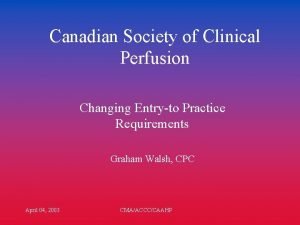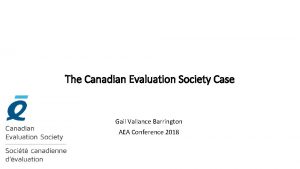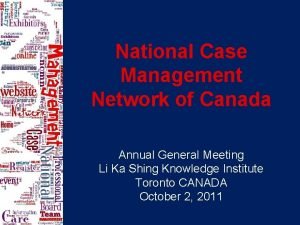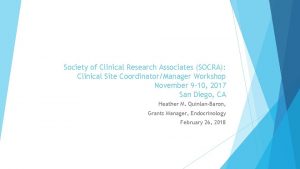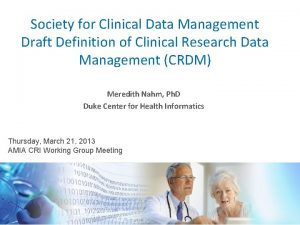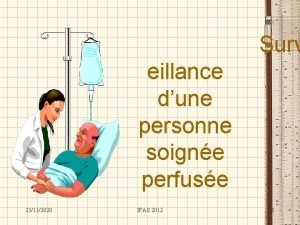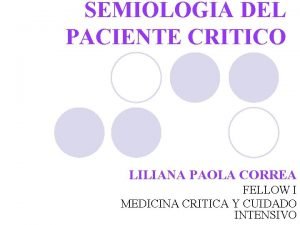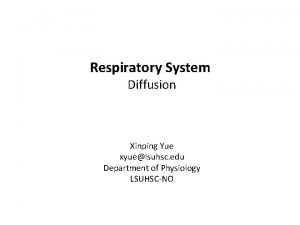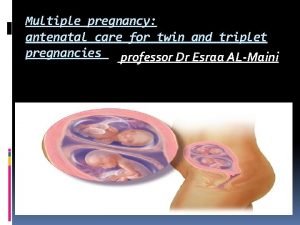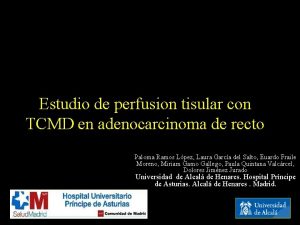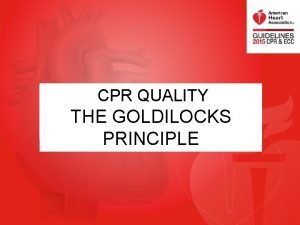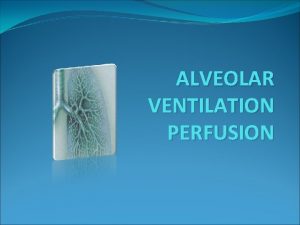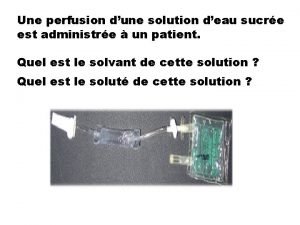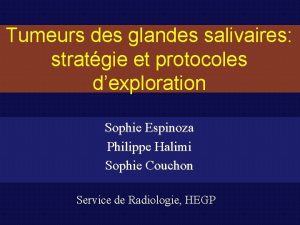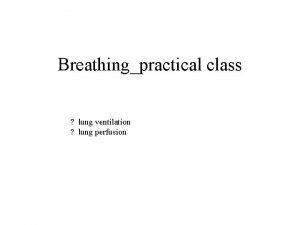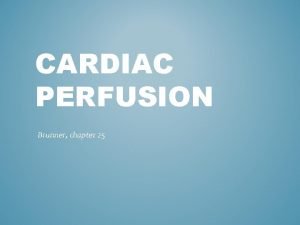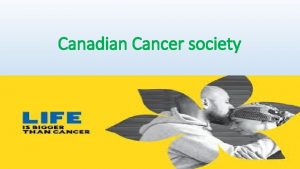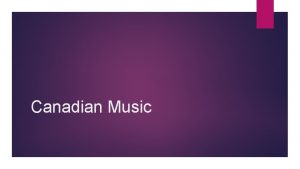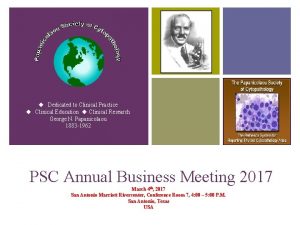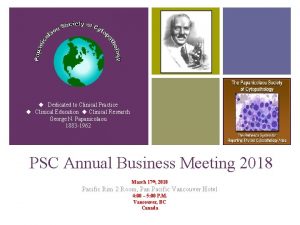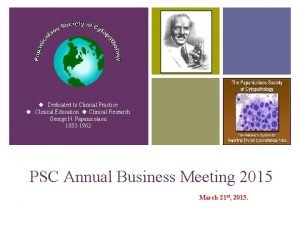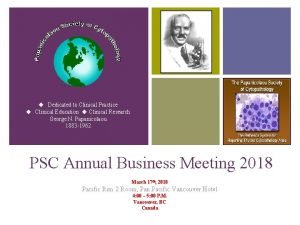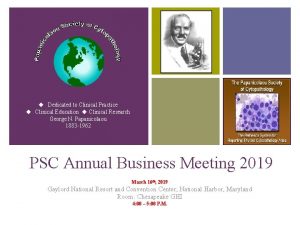Canadian Society of Clinical Perfusion Changing Entryto Practice















- Slides: 15

Canadian Society of Clinical Perfusion Changing Entry-to Practice Requirements Graham Walsh, CPC April 04, 2003 CMA/ACCC/CAAHP

Changing Entry-To-Practice • No Official Policy Outlining Change • Current Directive: – Ad Hoc Committee formed – Pursue Conversion to Degree Program April 04, 2003 CMA/ACCC/CAAHP

Impetus To Change • Next Logical step • Reduce “Replicative Fading” • Feeder Professions Changing to Degree April 04, 2003 CMA/ACCC/CAAHP

Impetus To Change • Increasing Level of Responsibility • “On Pump” = “Anaesthesia Coffee” • Significant Independence on Decision • Ever Increasing Expectations April 04, 2003 CMA/ACCC/CAAHP

Degree Level • Masters • Baccalaureate – Pre Existing – Full Program April 04, 2003 CMA/ACCC/CAAHP

Masters Level • • Favored by Some Nursing, Respiratory Already Baccalaureate Next Level Up Needed to Maintain “Advancement” Perception April 04, 2003 CMA/ACCC/CAAHP

Effects on Profession • • • Raises Entry To Practice Bar Significantly May Reduce Applicant Pool Increases training time to ~2 years Increased Research May Result In A More “Academic Perfusionist” • Maybe Too Much for Entry Level April 04, 2003 CMA/ACCC/CAAHP

Effects on Schools • Current Programs May not Qualify • May Require Ph. D. to Run Program • Heavy Research Component April 04, 2003 CMA/ACCC/CAAHP

Baccalaureate - Stand Alone • • • Entry Directly From High School Four year program Broader Based Knowledge Less emphasis on “Clinical” Will have to Teach All Aspects of Profession April 04, 2003 CMA/ACCC/CAAHP

Effects - Profession • • Average Age of Entry to Practice Decreases Lose Clinical Maturity Inject Fresh and Progressive Perspective May Raise “Intellectual” Base at Cost of Mature Decision Making Process • Meeting Labour Market Demand More Difficult • May Bring Needed Research April 04, 2003 CMA/ACCC/CAAHP

Effects on Training Programs • Complete Redesign of Current Programs • May need to Form Partnerships • Program Becomes More Expensive • Longer Market Response Time April 04, 2003 CMA/ACCC/CAAHP

Baccalaureate - Pre-existing • Require Baccalaureate Entry to Training • Graduate with Advanced Diploma • Simplest Way to Achieve Goal April 04, 2003 CMA/ACCC/CAAHP

Effects on Profession/Schools • • • Minimal - Status Quo Timelines Can Remain The Same Current Programs Can Meet Standard Doesn’t Advance Profession Lose Injection of Fresh Ideas April 04, 2003 CMA/ACCC/CAAHP

Where Do We Go From Here • A Question Of “When” Not “IF” • CSCP Must Have Full Debate • Propose Resolution – Setting Parameters – Time Frame • Hold Discussions With Stakeholders • Amend If Necessary And Pass Resolution April 04, 2003 CMA/ACCC/CAAHP

PROACTIVE NOT REACTIVE April 04, 2003 CMA/ACCC/CAAHP
 Canadian society of clinical perfusion
Canadian society of clinical perfusion Dr friedman cushing's
Dr friedman cushing's Canadian evaluation society
Canadian evaluation society Triple e bottom line
Triple e bottom line Canadian standards of practice for case management
Canadian standards of practice for case management Society of clinical research associates
Society of clinical research associates Society for clinical data management
Society for clinical data management Tubulure dialaflow
Tubulure dialaflow Cuadrante de stevenson
Cuadrante de stevenson Perfusion limited vs diffusion limited
Perfusion limited vs diffusion limited Monochorionic monoamniotic twins
Monochorionic monoamniotic twins Perfusion tisular
Perfusion tisular Cpr routine
Cpr routine Shunt vs dead space
Shunt vs dead space Perfusion
Perfusion Maligne fse
Maligne fse
